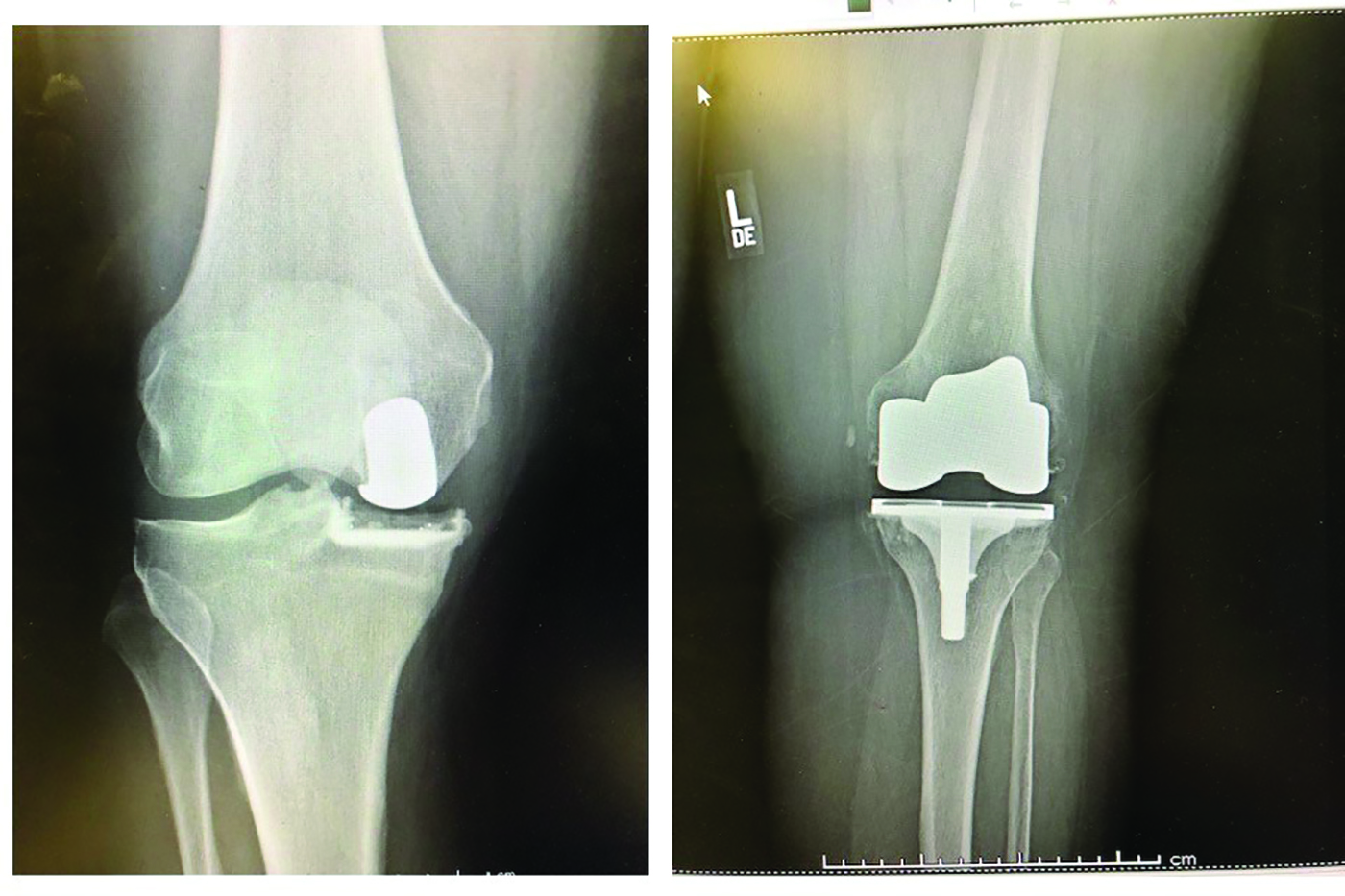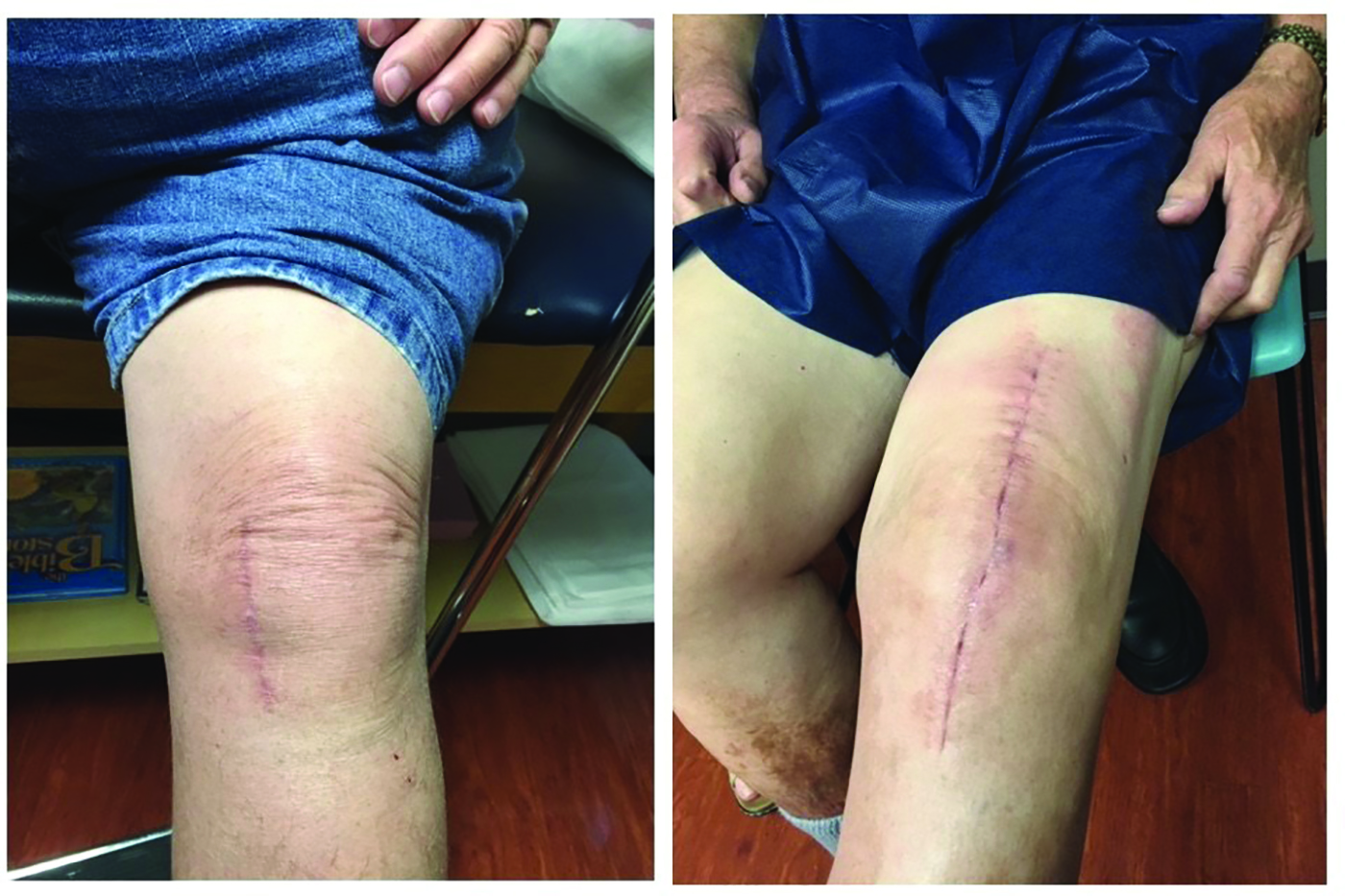With Americans living longer and weighing more than they used to, there has been a significant increase of severe degenerative arthritis in this country. When the cartilage, or cushion, of the knee is worn down to bone, most Orthopaedic surgeons will recommend total knee replacement (TKR) only. This recommendation is made even though more often than not, only one of the 3 compartments of the knee is affected. That means that the other 2 compartments, despite being healthy, are resurfaced with metal and plastic. However, total knee replacement is not your only choice.
Though upwards of 95% of knee replacements performed in the United States are total knee replacement procedures, that procedure has its drawbacks. Some studies have demonstrated that a total knee replacement has a patient dissatisfaction rate of almost 20%. Furthermore, total knee replacement does exactly what its name suggests – it completely replaces the surface of the knee. In order to do that, a surgeon must remove ligaments (usually the anterior cruciate ligament (ACL) and/or the posterior cruciate ligament (PCL)). And, regardless of whether the problem exists in only one part of your knee, a total knee procedure essentially sacrifices the functioning part of your knee to address the problem area.
A total knee replacement is a final procedure. Once it is completed, the only option a patient has is to have a revision if necessary. As Bob Eberle, the Director of Clinical Affairs at Maxx Orthopedics points out, "Knee replacements are becoming more common among younger patients. As a result, they expect the procedure to last." But, this is not always the case and sometimes a second operation must be performed if the patient has had the total knee replacement early in life. At that point, a replacement of the replacement is the only option.
As a patient, it is important to be sure that you pursue the right course of treatment. While you should not discount the recommendations or suggestions of a surgeon, it is perfectly acceptable to ask questions. It is also a good idea to perform your own research to ensure that you are exhausting all options. To that end, understanding your surgical options regarding knee replacement means knowing that other options exist.
One such option is minimally invasive partial knee resurfacing (MIPKR). This procedure, only performed approximately 3% of the time in the United States, is used by surgeons in Europe in 8 to 10% of cases. The MIPKR is an underutilized procedure that can greatly increase a patient's quality of life and enable them to continue doing things that a total knee replacement does not.
MIPKR is a viable alternative for some groups of patients – particularly those dealing with unicompartmental arthritis. MIPKR is also an excellent choice for patients younger than 60. Gerry Savage, the Vice President of Sales for Maxx Orthopedics, explains the benefits of the procedure, "It is a minimally invasive resurfacing procedure with minimal bone loss. Because of the minimal bone loss, patients retain full function of their knee and keep their ligaments." This means that an individual can continue remaining active and taking part in activities that they enjoy.
Patients who have a partial knee replacement also have options down the road. If the knee continues to cause issues and additional surgeries are needed, the MIPKR makes those procedures easier since more natural bone and ligament remain. This means that younger patients can ensure that they retain natural knee function as long as possible.
Additional benefits of the MIPKR include a shorter procedure time – usually about 45 minutes – and patients are usually able to go home from the hospital the same day. The infection rate of the procedure is also 15 times less than that of total knee replacements. And, formal physical therapy is not usually required. Instead, patients are given exercises to perform on their own at home. All of this leads to faster recovery and return to a normal quality of life.
In Chattanooga, one orthopedic surgeon performs a particularly effective form of the MIPKR. Dr. Marty Redish has been utilizing the Repicci technique for approximately 20 years. The technique was developed by Dr. John Repicci, a dentist turned orthopedic surgeon, and removes only the diseased portion of the bone. Using a high-speed burr, the doctor performing the surgery typically freehand sculpts the area that needs to be removed.
Over the last 20 years or so, Dr. Redish has performed roughly 3,000 of these procedures. This has allowed him to continue working to perfect the technique and has made him one of the world's leading experts on the procedure. He has published studies related to the procedure and has an abstract that has been accepted for the 21st EFORT Congress in Vienna, Austria this coming June. Dr. Redish says, "The study we published of follow up 10-13 years after surgery showed a 94.6% retention of the implant, which is better than most all partial knees, and the results are significantly better than total knees as far as patient satisfaction. I wanted to show that this works, and it holds up over time."
Dr. Redish is passionate about this treatment option and has worked closely with Ortho Maxx to develop tools that will make the procedure more common. These tools include a jig designed to help bone removal be less freehand and more structured. Since surgeons focus largely on the procedures they want to do or are comfortable performing, Dr. Redish and Ortho Maxx are working to make the MIPKR more straightforward and easier for other physicians. In doing so, they will expand the treatment choices available to patients. As Dr. Redish says, "Surgery can be enjoyable and fun when using well-made tools and when everything fits together as it should. My goal is to provide cutting bits and guides to the surgeon that were previously not available, then reintroduce this technique to a new generation of orthopedic surgeons in the hope that they will find it easy and reproducible."
If you have an arthritic knee and have been advised that you need a total knee replacement, be sure to gather as much information as possible. Being your own advocate is important, and determining the right procedure means knowing all of your options. A minimally invasive partial knee replacement may be the best choice for you based on your symptoms, age, and goals. Rather than feeling as though total knee replacement is your only option, visit partialkneedoc.com or call Dr. Redish's office at 423-493-5220 to learn more about MIPKR and to schedule a consultation to determine whether the procedure may be right for you.

